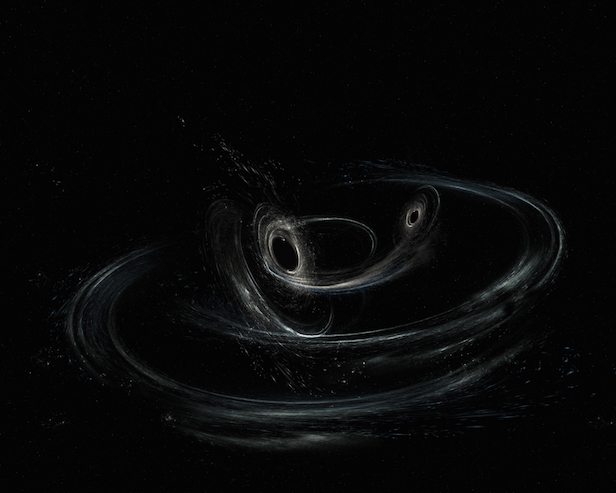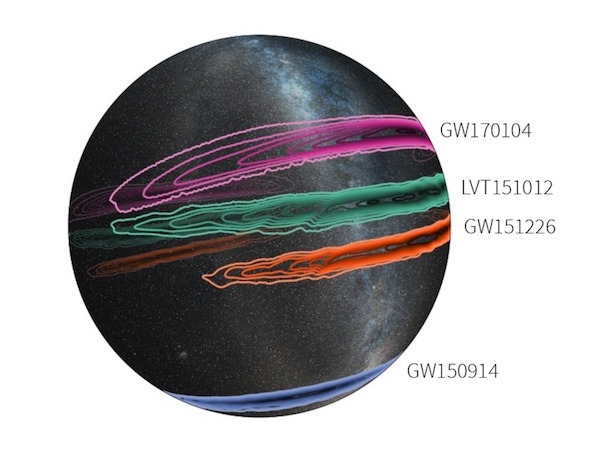LIGO detects gravitational waves for the third time
This is the most distant gravitational wave source detected yet

When massive bodies in the universe merge, they create detectable gravitational waves. Image credit: LIGO/Caltech/MIT/Sonoma State (Aurore Simonnet)
A third gravitational wave has been detected by the Laser Interferometer Gravitational-wave Observatory (LIGO), this ripple through space and time has travelled 3 billion light years to reach us, the farthest source found yet. The gravitational waves consisted of two black holes merging, much like the previous two detections.
As black holes merge, a certain amount of mass is lost in the form of gravitational waves, which ripple through the fabric of space-time – an event that can be likened to the disturbance created when a stone is dropped into a lake. The existence of gravitational waves is consistent with Albert Einstein’s General Theory of Relativity, which was hypothesised in 1918.
The third detection, now called GW170104, was picked up using both LIGO’s two interferometers, which reside in Livingston, Louisiana and the other in Hanford, Washington, United States. The space-time disturbance was detected on the 4 January 2017 and after analysis, it has been deduced that the black holes that created it are over 20 times the mass of the Sun. After merging, the final black hole is now 49 times the mass of the Sun, with some of its mass lost as radiated energy.

This 3D projection of the night sky shows the locations of the three confirmed gravitational waves (GW150914, GW15226, GW170104), with a possible fourth detection (LVT151012). Image credit: LIGO/Caltech/MIT/Leo Singer (Milky Way image: Avel Mellinger)
“In this case, we’re exploring approximately 3 billion light-years away! LIGO continues to make remarkable discoveries, transitioning from experiment to gravitational wave observatory,” says the National Science Foundation (NSF) Director, France Córdova. “More importantly each detection has offered much more than just a ‘sighting. Slowly, we are collecting data that unveil the origin and characteristics of these objects, further informing our understanding of the universe.”
With a third LIGO interferometer being constructed in India, this branch of astronomy is making headlines and will continue to do so. By building a collection of gravitational wave data, we can further our understanding of the larger bodies of the universe, such as black holes and neutron stars and investigate how they affect space and time in violent collisions.
Keep up to date with the latest space news in All About Space – available every month for just £4.99. Alternatively you can subscribe here for a fraction of the price!




